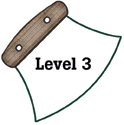
Alaska Science
Key Element D5
 |
Alaska Science |
|
Performance Standard Level 3, Ages 11–14
|
|
|
|
Sample Assessment Ideas
|
Standards Cross-References
|
||
|
National Science Education Standards The potential for accidents and the existence of hazards imposes the need for injury prevention. Safe living involves the development and use of safety precautions and the recognition of risk in personal decisions. Injury prevention has personal and social dimensions. (Page 168) Human activities also can induce hazards through resource acquisition, urban growth, land-use decisions, and waste disposal. Such activities can accelerate many natural changes. (Page 168) Science influences society through its knowledge and world view. Scientific knowledge and the procedures used by scientists influence the way many individuals in society think about themselves, others and the environment. The effect of science on society is neither entirely beneficial nor entirely detrimental. (Page 169) Societal challenges often inspire questions for scientific research, and social priorities often influence research priorities through the availability of funding for research. (Page 169) Technology influences society through its products and processes. Technology influences the quality of life and the ways people act and interact. Technological changes are often accompanied by social, political, and economic changes that can be beneficial or detrimental to individuals and to society. Social needs, attitudes, and values influence the direction of technological development. (Page 169) |
Benchmarks The human ability to shape the future comes from a capacity for generating knowledge and developing new technologies—and for communicating ideas to others. (Page 55) Technology cannot always provide successful solutions for problems or fulfill every human need. (Page 55) New technologies increase some risks and decrease others. Some of the same technologies that have improved the length and quality of life for many people have also brought new risks. (Page 56) Rarely are technology issues simple and one-sided. Relevant facts alone, even when known and available, usually do not settle matters entirely in favor of one side or another. That is because the contending groups may have different values and priorities. They may stand to gain or lose in different degrees, or may make very different predictions about what the future consequences of the proposed action will be. (Page 56) Societies influence what aspects of technology are developed and how these are used. People control technology (as well as science) and are responsible for its effects. (Page 56) |
|
Table of Contents | Return to Alaska Native Knowledge Network